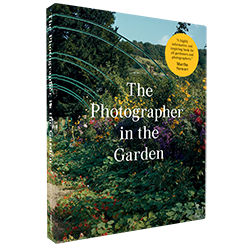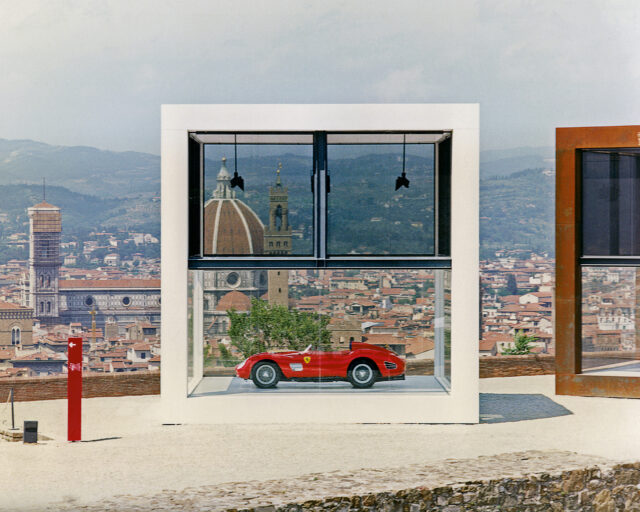Gardens of Earthly Delight
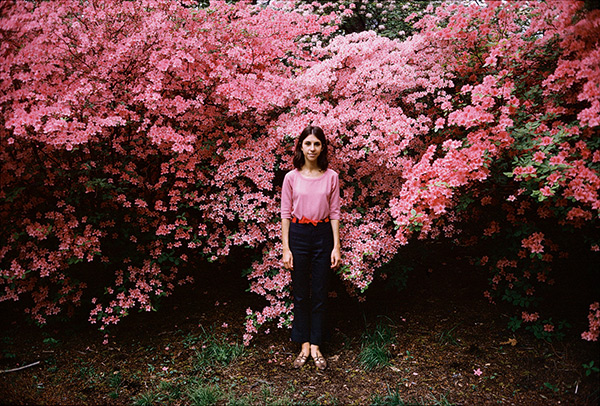
Joel Meyerowitz, Vivian, Bronx Botanical Gardens, New York City, 1966
© the artist and courtesy Howard Greenberg Gallery, New York
Though it is impossible to state unequivocally that the biblical Garden of Eden is a referent for all photographers working in the garden, the idea of Eden, or rather its cultural hallmarks—innocence, tranquility, simplicity, abundance, florescence, and, above all, beauty—are found in many photographs made in the garden, such as this one. Here, Joel Meyerowitz photographs a young woman on the verge of adulthood posed against a profusion of azalea blossoms that seem to spread their transformative and seductive color across her chest in a magical embrace.

Sam Abell, Picnic Table, with Hail Stones, Colorado Springs, CO, 1980
© the artist/National Geographic Creative
While not a gardener, by his own admission, Sam Abell is among the ranks of people who look to gardens as places for inspiration, recreation, and pleasure: “I’m not a gardener or even a garden photographer. I’m a traveler who visits gardens for solace and visual inspiration. That means I seek from gardens what I seek from life itself—visually layered scenes that hold the possibility for meaningful photographic moments.” In this picture, Abell captures a transformative act of nature—a hailstorm in high summer—as a moment of enchanted incongruity.

Lori Nix, Wasps, 2002
Courtesy the artist; ClampArt Gallery, New York; and George Eastman Museum
Photographed from the perspective of a child, Lori Nix’s Wasps appears to be a picture of insects buzzing above the handlebars of an abandoned bike in an overgrown garden. In fact, the picture is a constructed image, made by photographing a small studio diorama created by Nix and her collaborator, Kathleen Gerber. Even so, the picture functions as a very effective aide-mémoire, recalling dreamy summer evenings when real magic seemed possible.
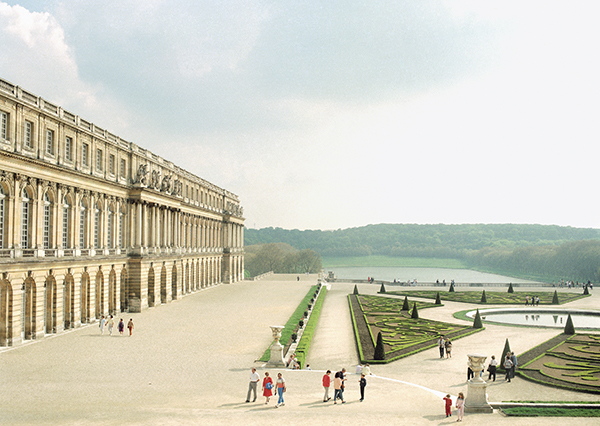
Luigi Ghirri, Versailles, 1985
© the Estate of Luigi Ghirri and courtesy Matthew Marks Gallery, New York and Los Angeles
The modern landscape of Europe and its mooring in history were both blessing and burden to photographer Luigi Ghirri. At Versailles, Ghirri grappled with how to represent a historical landmark and its expansive garden as they are experienced by tourists in the present day. In this picture, the visitors, tiny figures in the landscape, serve as a gauge of both the scale and the marvel of the place.

Martin Parr, Loders Street Fair, England, 1999
© the artist and courtesy Magnum Photos
In Martin Parr’s photograph of Loders Street Fair, the flowers, not the humans, are the focus. The unusual composition, which crops out the women’s faces and any other signifiers of place, turns a quotidian sight into a surreal fantasy. Parr explains, “I placed the flowers into some form of social context by making the backdrop as important as the flower in the foreground. I wanted to turn the image of the flower, so often regarded just as a beautiful object, into a social landscape.”

John Pfahl, Threadleaf Japanese Maple Tree, Hershey Gardens, Pennsylvania, October 1999, from the series Extreme Horticulture
© the artist and courtesy George Eastman Museum
John Pfahl was looking for “the unusual, the bizarre, the abundant, and the exuberant” when he created the series that he calls Extreme Horticulture. Pfahl worked with a 4-by-5 field camera and a wide-angle lens to achieve both expansive and highly detailed images, explaining, “Perceptually, when one walks through a garden, one looks at specific plants sequentially while everything else becomes a blur. However, having everything from foreground to infinity in focus creates a surreal dream-like image where everything is equally seductive and inspectable in minute detail.”

Sheron Rupp, Trudy in Annie’s Sunflower Maze, Amherst, MA, 2000
© the artist
Sheron Rupp has lived in the foothills of the Berkshires in western Massachusetts for over forty years, where she made this photograph of an elderly woman strolling through a sunflower maze. Dressed as if for church, the woman, while identified as Trudy, is a mysterious presence on an equally mysterious quest.
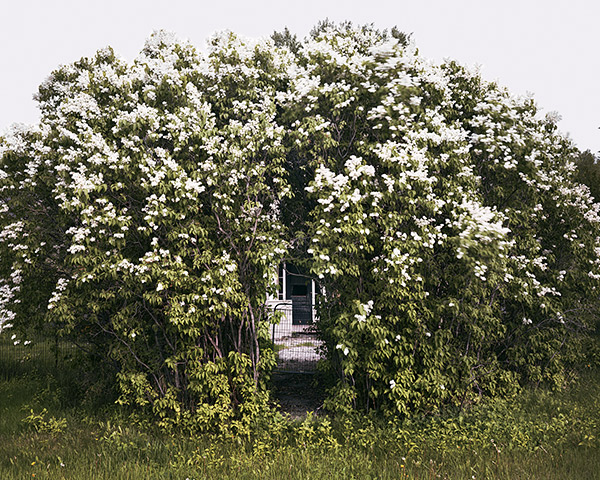
Virginia Beahan and Laura McPhee, White Lilacs, Emigrant Gulch, Montana, 2001
© the artist
“The work insists on restarting a complex conversation about the ways our lives are intertwined with the spaces and substances of the earth, a conversation that seems to have its origins behind the camera, with two visions and voices rather than one shaping each image,” writes Rebecca Solnit on Virginia Beahan and Laura McPhee’s series No Ordinary Land. Here, the photographers capture a mundane garden gate made briefly magical by its lilac mantel.
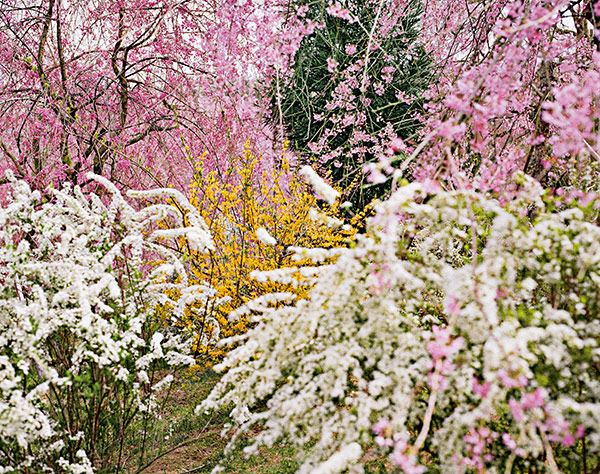
Jacqueline Hassink, Haradani-en 1, Northwest Kyoto, 2010, from the series View, Kyoto
© the artist
Jacqueline Hassink photographed Zen Buddhist gardens in Japan for ten years for her series View, Kyoto. Haradani-en 1, Northwest Kyoto (2010) represents one of the most famous gardens in Japan at the peak of sakura matsuri, or the cherry blossom festival. Traditionally, visitors at this time will picnic under the blossoms, a centuries-old tradition known as hanami. Hassink, having taken her camera off the prescribed path, eschews a more cultivated image of the cherry blossoms in favor of celebrating their wild embrace and florescent abundance.

Collier Schorr, Lily Pads 3, 2006, from the series Blumen
© the artist and courtesy 303 Gallery, New York
For her series Blumen, Collier Schorr pushed the notion of flower arranging out into the field—quite literally—where she would playfully construct still lifes with flowers, string, and sticks, making a game of creating her own ephemeral garden. Schorr admits to stealing the flowers that she used from other people’s gardens, in order to create this small temporary tableau in which, according to Schorr, “the flowers begin to wilt, changing shape and color. And inevitably, the wind blows them down.”
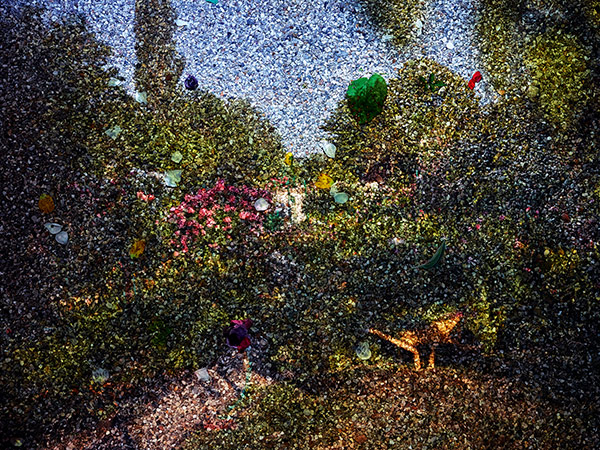
Abelardo Morell, Tent Camera Image: View of Monet’s Gardens with Wheelbarrow, Giverny, France, 2015
© the artist and Courtesy Edwynn Houk Gallery, New York and Zürich
In the series After Monet, Abelardo Morell borrows from an existing garden, Monet’s garden at Giverny, to make something entirely new. Working in a tent that he transforms into a camera obscura, Morell rephotographs the image of Monet’s brightly patterned garden as it is projected onto the gravel of the garden path. The texture of the gravel dissolves the otherwise straightforward image into something decidedly more impressionistic and paradisiacal.
These photographs are included in The Photographer in the Garden by Jamie M. Allen and Sarah Anne McNear.










